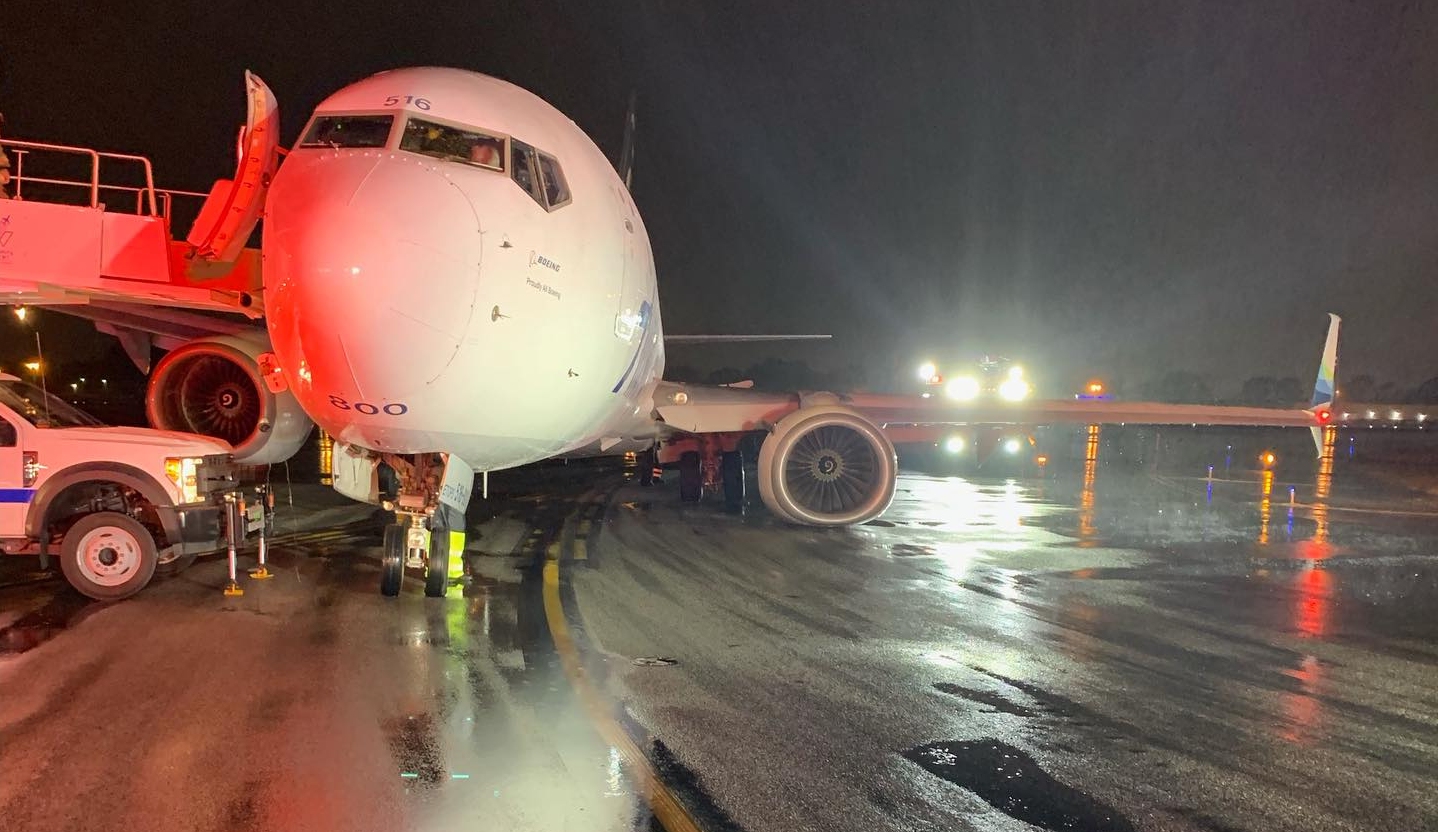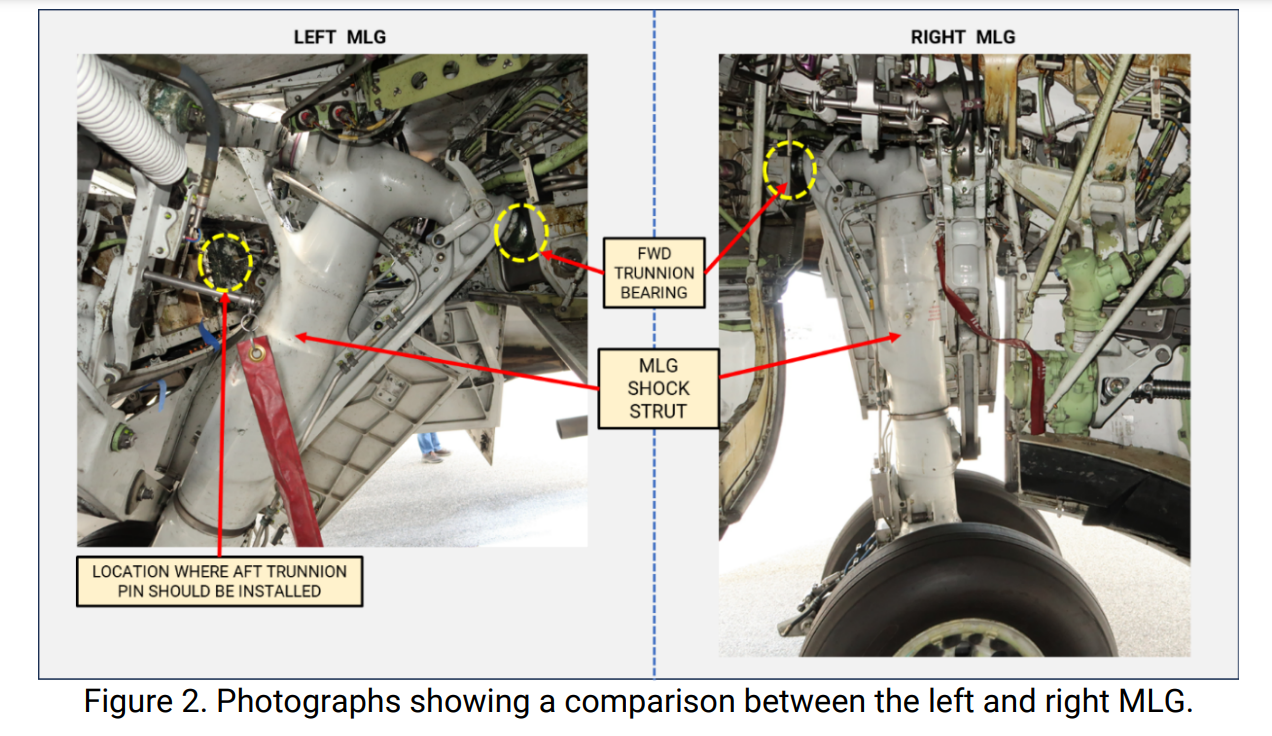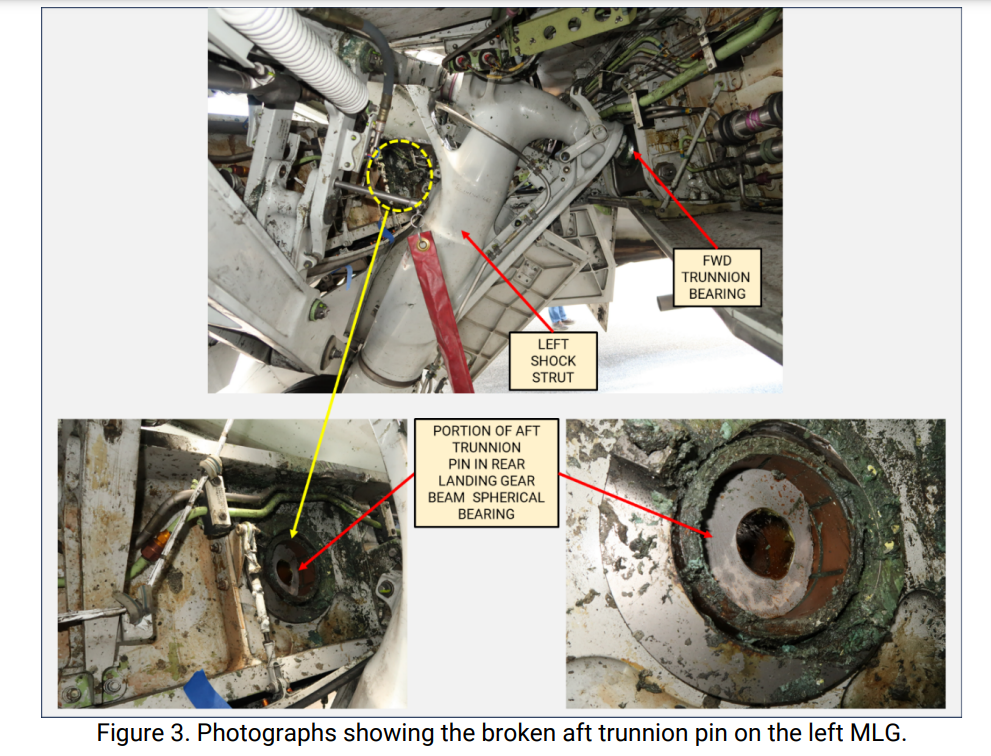
This information is added by users of ASN. Neither ASN nor the Flight Safety Foundation are responsible for the completeness or correctness of this information.
If you feel this information is incomplete or incorrect, you can submit corrected information.
| Date: | Sunday 20 August 2023 |
| Time: | 23:15 |
| Type: |  Boeing 737-890 (WL) |
| Owner/operator: | Alaska Airlines |
| Registration: | N516AS |
| MSN: | 39044/2751 |
| Year of manufacture: | 2008 |
| Total airframe hrs: | 53207 hours |
| Fatalities: | Fatalities: 0 / Occupants: 112 |
| Aircraft damage: | Substantial |
| Category: | Accident |
| Location: | Santa Ana-John Wayne International Airport (SNA/KSNA), Santa Ana, CA -
 United States of America United States of America
|
| Phase: | Landing |
| Nature: | Passenger - Scheduled |
| Departure airport: | Seattle/Tacoma International Airport, WA (SEA/KSEA) |
| Santa Ana-John Wayne International Airport, CA (SNA/KSNA) | |
| Investigating agency: | NTSB |
| Confidence Rating: |
On August 20, 2023, about 2315 Pacific daylight time (PDT), Alaska Airlines flight 1288, a Boeing 737-890, sustained damage when the left main landing gear collapsed after landing on runway 20R at John Wayne-Orange County Airport (SNA), Santa Ana, California. The 112 passengers and crew evacuated the airplane via stairs onto taxiway E with no injuries. The flight was operating under the provisions of 14 Code of Federal Regulations Part 121 as a scheduled domestic passenger flight from Seattle, Washington, to SNA.
The flight crew reported that prior to the final approach fix, the airplane was fully configured, and they had completed the before landing checklist, and everything appeared normal. They were also making position reports via the common traffic advisory frequency (CTAF) as the tower was closed.
The flight crew reported that there was moderate rain, shifting winds, light turbulence, and instrument meteorological conditions until the aircraft broke out at about 800 feet above ground level (AGL). Although the weather was improving, the captain and the first officer (FO) discussed that a firm touchdown was appropriate. As soon as they saw the runway, the captain, who was the pilot flying, disengaged the autopilot and autothrottle.
The FO, during the approach, continued to monitor the flight's status, noting that the aircraft was on speed and on path. During the descent, all systems were operational, and all of the landing gear position indicator lights were green, indicating both MLG and the nose gear were in their down and locked position. The airplane crossed the end of the runway on the glide path and touchdown just past the 1,000-foot marker.
According to the captain, upon landing, the touchdown had a “firm jolt feeling” to it, and the aircraft was pulling reasonably hard to the left. The captain was able to overcome this with rudder pedal input and was able to keep the plane on the center line. He stated to the FO that it felt like the airplane had a flat tire on the left MLG. The FO completed the after-landing procedures, which included bringing the auxiliary power unit (APU) online. The captain slowed the aircraft to taxi speed and exited the runway onto taxiway E. After the aircraft made the turn onto the taxiway, the crew noticed that the aircraft was listing to the left.
The captain stopped the airplane on the taxiway and set the parking brake. He opened his window, looked outside, and noticed that the aircraft was resting on the left engine cowling (Figure 1), and it appeared to be still running normally. He immediately shut down the left engine. The captain also noted that the left landing gear position indicator light was not green anymore; it had gone completely dark, whereas the nose and right MLG position indicator lights were still green. After confirming the APU was running, he shut down the right engine. He made announcements to the passenger cabin and briefed the flight attendants. No injuries were reported.
The FO announced their intentions via the CTAF to remain on taxiway E and SNA crash, fire & rescue responded to the scene. After crash, fire & rescue determined there were no fuel leaks and the flight crew confirmed that there were no injuries on board the aircraft, an evacuation was performed through the R1 door via stairs onto the taxiway.
Postaccident examination of the airplane revealed that the MLG aft trunnion pin had fractured (Figures 2 and 3). The aft end of the left MLG had traveled up, puncturing the composite panels, and protruded out and above the wing’s surface. The MLG walking beam was also protruding above the surface of the wing. The forward section of the aft trunnion pin was located inside the trunnion and was held in place by a damaged but intact cross bolt. The aft section of the pin had separated and was located in the MLG beam spherical bearing.
The left MLG beam sustained damage as a result of the left MLG moving out of position and contacting the beam after the failure of the trunnion pin. The left-wing flap transmission drive unit, located in the left wheel well, separated from its mounting structure and was found on the runway near the airplane’s initial touchdown point.
Upon notification, the following NTSB specialists were assigned to investigate the accident: operations, structures, maintenance, and flight data recorder. Parties to the investigation include the Federal Aviation Administration (FAA), Alaska Airlines, The Boeing Company, the Air Line Pilots Association, International (ALPA), and the Aircraft Mechanics Fraternal Association (AMFA).
The digital flight data recorder (DFDR) and the cockpit voice recorder (CVR) were removed from the airplane and shipped to the NTSB’s Vehicle Recorder Laboratory located in Washington, DC, for a download of the data. The DFDR was downloaded on and a review of the preliminary data indicates that the aircraft touched down about 23:15 PDT with a maximum vertical acceleration of 1.71g. The value is below the hard landing threshold of 2.2G per Alaska Airlines aircraft maintenance manual (AMM) Chapter 5 limitations.
The CVR was downloaded, and the data is currently being analyzed.
The left MLG trunnion pin was removed and the structures group reconvened at the Boeing equipment quality analysis (EQA) laboratory in Seattle, Washington, for further analysis.
The investigation continues.
Accident investigation:
 |
|
Sources:
https://www.msn.com/en-us/travel/news/alaska-airlines-flight-makes-rough-landing-at-john-wayne-airport/ar-AA1fASGy?ocid=weather-verthp-feeds
https://www.facebook.com/photo?fbid=673905424771618&set=pcb.673905501438277
https://www.facebook.com/photo/?fbid=673905434771617&set=pcb.673905501438277
NTSB
https://www.flightradar24.com/data/aircraft/n516as#31ae9795
History of this aircraft
Other occurrences involving this aircraft
| 24 December 2008 | N516AS | Alaska Airlines | 0 | Seattle/Tacoma International Airport, WA (SEA/KSEA) |  |
non |
| Inflight smoke | ||||||
Location
Images:



Media:
— Johnny5 (@SDYankee69) August 21, 2023
Revision history:
| Date/time | Contributor | Updates |
|---|---|---|
| 21-Aug-2023 19:03 | Flightwriter | Added |
| 21-Aug-2023 19:06 | harro | Updated |
| 22-Aug-2023 07:46 | harro | Updated |
| 26-Aug-2023 06:34 | Anon. | Updated |
| 31-Aug-2023 10:21 | Dan | Updated |
| 31-Aug-2023 10:23 | harro | Updated |
| 11-Sep-2023 19:16 | Captain Adam | Updated |
| 12-Sep-2023 18:45 | harro | Updated |
Corrections or additions? ... Edit this accident description
The Aviation Safety Network is an exclusive service provided by:


 ©2024 Flight Safety Foundation
©2024 Flight Safety Foundation